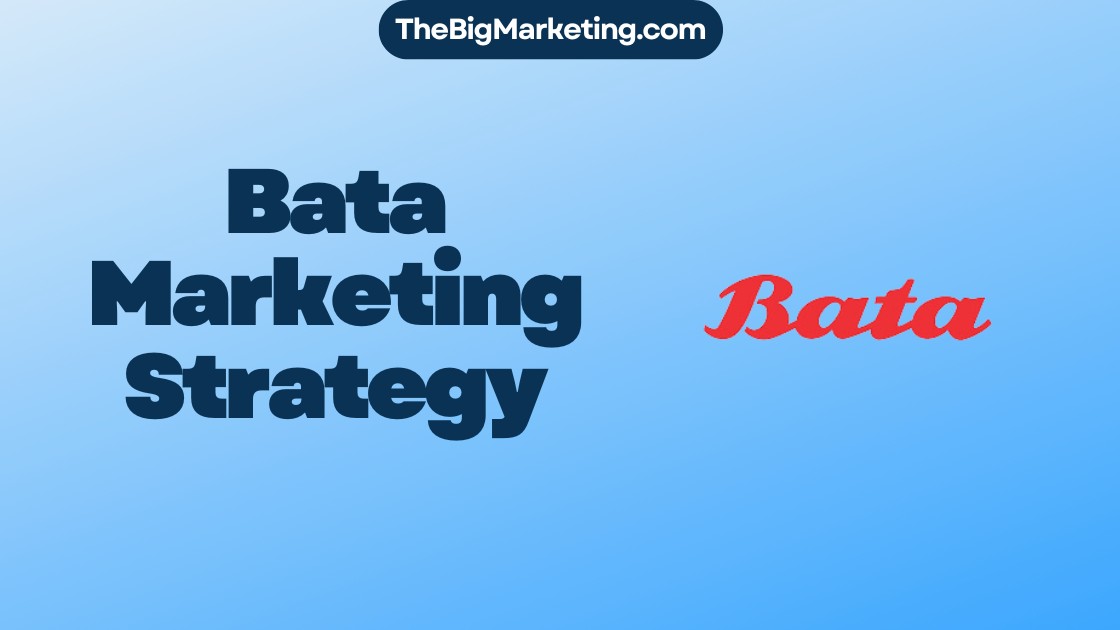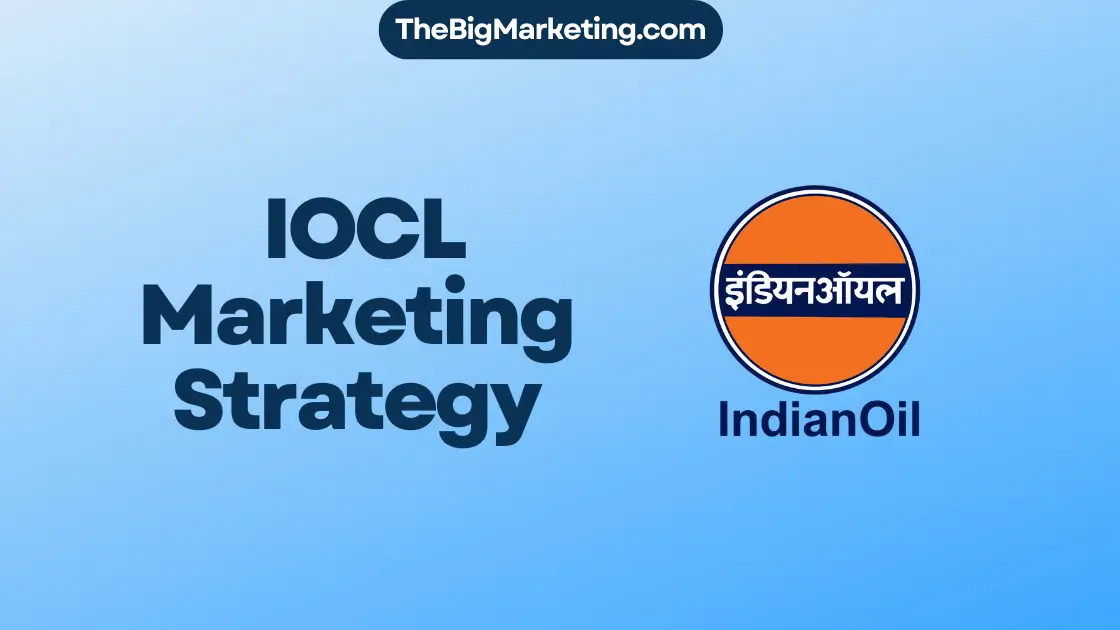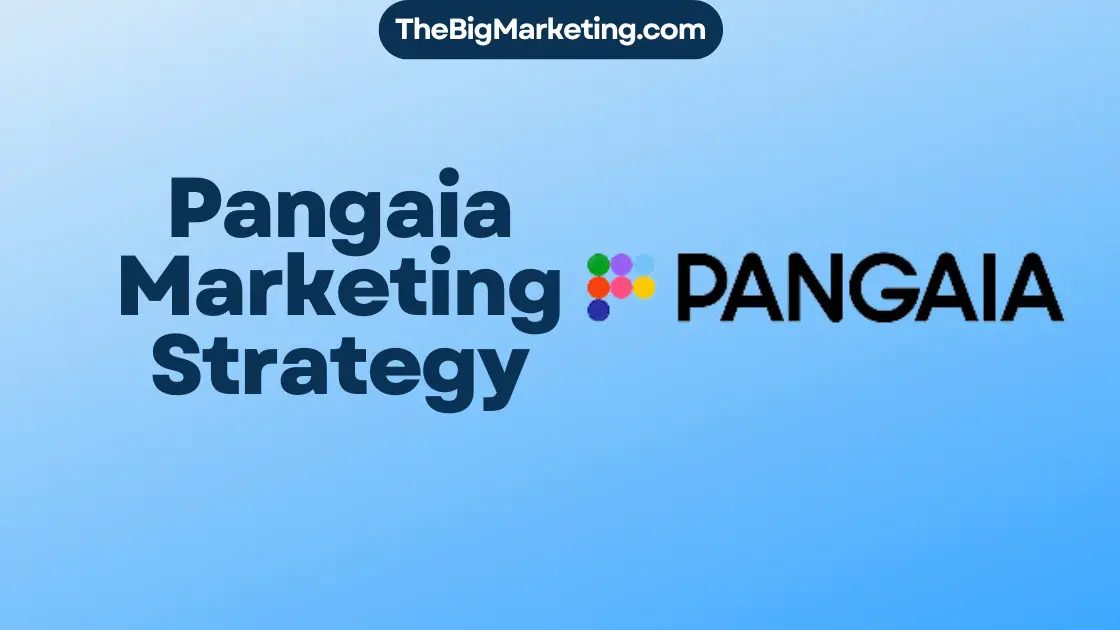Lloyds Banking Group is embarking on an ambitious journey to solidify its position as a customer-focused digital leader and an integrated financial services provider in the UK. With a firm commitment to innovation and customer satisfaction, the organization is set to invest a staggering £4bn over the next five years.
By deepening relationships with existing customers and capitalizing on emerging opportunities, Lloyds aims to drive higher growth and diversify its revenue streams. The organization recognizes the power of simplified and personalized channels in delivering exceptional customer experiences, setting the stage for unprecedented success in the ever-evolving digital landscape.
Key Takeaways
- Lloyds Banking Group is investing £4bn in its marketing strategy over the next five years.
- The organization aims to become a customer-centric digital leader and integrated financial services provider.
- By simplifying and personalizing its channels, Lloyds plans to enhance customer experiences and drive growth.
- The organization is targeting the mass affluent segment and offering a digital-first approach.
- Lloyds Banking Group is committed to staying at the forefront of digital innovation and sustainable practices.
Overview of Lloyds Banking Group
Lloyds Banking Group is a leading financial services provider based in the United Kingdom. With a strong commitment to helping Britain prosper, the group focuses on delivering innovative solutions and driving positive change in the industry.
Financially, Lloyds Banking Group has achieved impressive results, reporting a pre-tax profit of £6.9bn for the full year. This represents an increase of 6% compared to the previous year, highlighting the group’s strong performance and market position.
However, Lloyds Banking Group’s impact goes beyond economic success. The company is dedicated to reducing carbon emissions by over 50% by 2030, aligning their business practices with sustainable development goals. By promoting a greener future, Lloyds Banking Group demonstrates its commitment to responsible corporate citizenship.
In addition to environmental sustainability, Lloyds Banking Group prioritizes social and economic development. The group aims to improve access to quality housing, ensuring that individuals and communities have a stable foundation for growth and prosperity. They also focus on promoting financial inclusion and education, empowering individuals to make informed financial decisions and achieve their goals.
Furthermore, Lloyds Banking Group actively supports regional development initiatives, contributing to the growth and vitality of local economies. By investing in communities, the group fosters an environment conducive to long-term success and shared prosperity.
Recognizing the value of diversity, Lloyds Banking Group is dedicated to creating a more inclusive workforce. They strive to cultivate an environment that embraces diversity of thought, background, and experience, fostering innovation and driving better business outcomes.
Market Research Insights:
Market research insights reveal that Lloyds Banking Group’s strong financial performance, focus on sustainability, and commitment to social development resonate positively with consumers. Customers appreciate the company’s efforts to contribute to the greater good and value their socially responsible stance.
Research further indicates that Lloyds Banking Group’s branding as a customer-centric and socially-conscious institution enhances their reputation and attracts a loyal customer base. By aligning their values with those of their target market, the group has successfully differentiated themselves from competitors and positioned themselves as a trusted financial services provider.
Overall, Lloyds Banking Group’s comprehensive approach to financial services branding, market research insights, and commitment to responsible practices make them a key player in the industry, driving positive change and contributing to the prosperity of the UK.
Customer Segmentation Strategy
Lloyds Banking Group recognizes the importance of customer segmentation in their marketing strategy. By understanding the unique needs and preferences of their 26 million customers, they can provide more personalized and relevant engagement experiences. Leveraging their data and analytics capabilities, Lloyds aims to deepen the relationships with existing customers by more than 5% by 2024.
One of the key segments that Lloyds is targeting is the “mass affluent” audience. This segment comprises customers with income or wealth above £75,000, and Lloyds aims to offer them a digital-first, integrated banking solution. By catering to this specific segment, Lloyds intends to provide a comprehensive range of financial services tailored to the needs and aspirations of these high-net-worth individuals.
Through customer segmentation strategies, Lloyds Banking Group aims to strengthen customer loyalty and retention. By delivering personalized offerings and engagement, they can enhance the customer experience and foster long-term relationships. Moreover, Lloyds is dedicated to leveraging their data and analytics capabilities to identify valuable insights about their customers, such as their financial goals and preferences. This allows Lloyds to offer tailored solutions and relevant recommendations that meet the specific needs of each customer segment.
Customer Segmentation Examples
In order to illustrate the effectiveness of their customer segmentation approach, below are two customer segmentation examples utilized by Lloyds Banking Group:
| Segment | Description | Marketing Strategy |
|---|---|---|
| Families with Young Children | Customers in this segment have young children and are focused on savings and investment options for education and future planning. | Lloyds offers tailored savings accounts and investment solutions specifically designed to meet the needs of families with young children. They also provide financial education resources to help parents make informed decisions. |
| Retirees | This segment comprises customers who have recently retired or are approaching retirement age. They are focused on generating steady income and maintaining financial stability. | Lloyds offers retirement planning services and a range of investment options that provide stable returns. They also provide exclusive discounts and offers on lifestyle services and products that cater to retirees’ needs. |
Lloyds Banking Group’s customer segmentation strategy enables them to effectively allocate resources and develop targeted marketing campaigns. By understanding their customers’ unique characteristics and needs, Lloyds can provide tailored solutions and experiences that drive customer satisfaction and loyalty.
Brand Identity Development
Lloyds Banking Group places a strong emphasis on its brand identity, which is inspired by its purpose of helping Britain prosper. The company believes that being customer-focused and adopting a unique business model are vital for ensuring long-term returns and capital generation. By driving growth and diversifying revenue streams, Lloyds aims to deliver a personalized and engaging customer experience that sets them apart in the banking industry.
To achieve their brand identity goals, Lloyds Banking Group focuses on:
1. Customer-Centric Approach
Lloyds understands the importance of putting customers at the heart of their business. By prioritizing their customers’ needs and preferences, they can create meaningful connections and deliver tailored solutions. This customer-centric approach not only enhances customer satisfaction but also builds trust and loyalty, ultimately driving brand growth.
2. Differentiated Business Model
Lloyds differentiates itself in the market by offering a unique business model that combines traditional banking services with innovative digital solutions. This strategic approach allows them to cater to a wide range of customer preferences and adapt to evolving market trends. By staying ahead of the curve, Lloyds maintains a competitive edge and positions itself as a leader in the financial services industry.
3. Personalized Brand Experience
Lloyds Banking Group strives to create a personalized brand experience for its customers. By leveraging data and analytics capabilities, they can gather insights into customer behavior and preferences. This information enables them to deliver targeted marketing campaigns, personalized offers, and customized services, providing customers with a tailored and engaging brand experience.
| Key Elements of Brand Identity Development | Benefits |
|---|---|
| A customer-centric approach | – Enhanced customer satisfaction – Increased trust and loyalty – Long-term brand growth |
| A differentiated business model | – Competitive advantage – Adaptability to market trends – Leadership in the industry |
| A personalized brand experience | – Targeted marketing campaigns – Customized services – Engaging customer interaction |
Through their brand identity development efforts, Lloyds Banking Group aims to establish a strong and recognizable brand that resonates with their target audience. By consistently delivering on their brand promises and providing exceptional customer experiences, Lloyds builds trust and loyalty, ultimately driving sustainable growth and success.
Omnichannel Marketing Strategies
Lloyds Banking Group is dedicated to providing a seamless omnichannel experience for its customers as part of its marketing strategy. The company is investing in simplifying and personalizing its channels to enhance customer engagement and satisfaction. By leveraging data and analytics, Lloyds aims to deliver personalized offers, pricing, and engagement across various channels.
The primary objective of Lloyds Banking Group is to increase its digitally active customer base by more than 10% by 2024. This ambitious goal will position Lloyds as the largest digital bank in the UK and help the organization solidify its leadership in the digital banking sector.
With its omnichannel marketing strategies, Lloyds Banking Group aims to create a cohesive and consistent customer experience across multiple touchpoints. By integrating digital and traditional channels, the organization ensures that customers can seamlessly interact with their banking services regardless of the platform or device they choose to use.
Through its omnichannel approach, Lloyds Banking Group can provide personalized and relevant offers based on individual customer preferences and behaviors. By leveraging data-driven insights, the organization can deliver tailored solutions, making banking more convenient and valuable for their customers.
One of the key elements of Lloyds’ omnichannel strategy is the utilization of digital platforms, including mobile banking apps and online banking portals. These platforms enable customers to access their accounts, complete transactions, and engage with the bank’s services from the comfort of their own homes or on the go.
Looking ahead, Lloyds Banking Group will continue to invest in its omnichannel marketing strategies and explore new technologies and innovations to enhance the customer experience further. By staying at the forefront of digital transformation in the banking industry, Lloyds aims to deliver exceptional value to its customers and maintain its position as a leader in the UK financial services sector.
Benefits of Lloyds Banking Group’s Omnichannel Marketing Strategies
Lloyds Banking Group’s omnichannel marketing strategies offer several advantages, including:
- Consistency: Customers can expect a seamless experience across multiple channels, making it easier to engage with the bank.
- Personalization: By leveraging customer data and analytics, Lloyds can deliver tailored offers and recommendations based on individual preferences and needs.
- Convenience: The integration of digital platforms enables customers to access banking services whenever and wherever it suits them best.
- Enhanced customer experience: With a holistic approach to customer engagement, Lloyds aims to provide a superior banking experience that meets and exceeds customer expectations.
Overall, Lloyds Banking Group’s omnichannel marketing strategies reflect the organization’s commitment to customer-centricity and innovation. These strategies will play a crucial role in achieving the company’s growth objectives while delivering exceptional value and convenience to its customers.
Competitive Analysis Framework
Lloyds Banking Group is committed to maintaining its position as a leading bank in the UK through a rigorous competitive analysis framework. By continuously analyzing the competitive landscape, Lloyds identifies new opportunities and stays ahead in the market. This proactive approach allows them to design effective strategies and make informed decisions.
Data and Analytics
One of the key components of Lloyds Banking Group’s competitive analysis framework is the utilization of data and analytics. By leveraging their data capabilities, Lloyds gain valuable insights into market trends, customer behavior, and competitor strategies. This information helps them identify gaps, assess risks, and develop targeted initiatives to stay competitive in the ever-evolving financial industry.
Innovation and Investment
Lloyds recognizes the importance of innovation in maintaining a competitive edge. They invest in cutting-edge technologies and explore new business models to deliver high-quality digital solutions and superior customer experiences. By embracing innovation, Lloyds Banking Group stays ahead of the curve and creates unique value propositions that differentiate them from their competitors.
Partnerships and Collaborations
In an increasingly interconnected world, Lloyds understands the value of strategic partnerships and collaborations. By collaborating with fintech companies, startups, and other industry players, Lloyds can tap into new market segments, technologies, and expertise. These alliances allow Lloyds to expand its offerings, enhance its capabilities, and deliver innovative solutions to its customers.
Continuous Improvement
Lloyds Banking Group is committed to continuous improvement, using feedback from customers and internal stakeholders to enhance their products, services, and processes. By leveraging customer insights, they can identify areas for improvement and adapt quickly to changing market dynamics. This agile approach ensures that Lloyds remains competitive and meets the evolving needs of its customers.
Table – Competitive Analysis Framework Components
| Components | Description |
|---|---|
| Data and Analytics | Leveraging data and analytics capabilities to gain insights into market trends, customer behavior, and competitor strategies. |
| Innovation and Investment | Investing in cutting-edge technologies and exploring new business models to deliver superior digital solutions and customer experiences. |
| Partnerships and Collaborations | Collaborating with fintech companies, startups, and industry players to tap into new market segments, technologies, and expertise. |
| Continuous Improvement | Using customer insights and feedback to identify areas for improvement and adapt quickly to changing market dynamics. |
Digital Trends in the Banking Industry
Lloyds Banking Group recognizes the importance of digital trends in the banking industry. With a strong focus on customer satisfaction, the organization has strengthened its digital offering and achieved record levels of engagement. As part of their commitment to staying at the forefront of digital innovation, Lloyds Banking Group has introduced innovative features in their mobile app to enhance the customer experience.
One such feature is the ability for customers to manage third-party subscriptions directly from the app. This empowers users to have more control over their financial commitments and ensures a seamless and convenient banking experience. Additionally, Lloyds Banking Group has implemented variable contactless limits, allowing customers to customize their spending limits according to their needs and preferences.
By embracing these digital trends, Lloyds Banking Group aims to provide a comprehensive and user-friendly banking experience. The organization’s focus on innovation and customer-centricity sets them apart in the industry and positions them for future success.
| Digital Trends in the Banking Industry | Benefits |
|---|---|
| 1. Mobile App Features | – Easier management of third-party subscriptions – Customizable contactless limits |
| 2. Enhanced User Experience | – Improved convenience and control – Seamless and personalized banking |
| 3. Innovation and Differentiation | – Staying at the forefront of digital trends – Setting industry standards |
Effective Customer Engagement Methods
Lloyds Banking Group understands the importance of delivering personalized and relevant engagement to its customers. By utilizing data and analytics, the company gains valuable insights into customer preferences, allowing them to tailor their offerings accordingly. This customer-centric approach has resulted in significant growth in small and medium-sized enterprise (SME) products originated via digital channels.
To enhance customer satisfaction, Lloyds Banking Group has invested in improving client journeys and increasing its digital marketing efforts. By streamlining processes and leveraging technology, the company creates seamless experiences for its customers, making banking more accessible and convenient.
Through targeted communications and personalized recommendations, Lloyds Banking Group strengthens its relationships with customers, establishing trust and loyalty. By engaging with customers in a meaningful way, the company fosters long-term relationships, ensuring a positive customer experience throughout their banking journey.
The Power of Personalization
One of the key strategies employed by Lloyds Banking Group in effective customer engagement is personalization. By understanding each customer’s unique needs and preferences, the company can offer tailored solutions and recommendations. This personal touch not only enhances the customer experience but also increases the likelihood of customer satisfaction and loyalty.
Creating Value Through Digital Channels
Lloyds Banking Group recognizes the importance of digital channels in engaging customers effectively. By leveraging technology and investing in digital innovation, the company provides customers with seamless access to its services. This includes user-friendly mobile apps, online banking platforms, and robust customer support systems.
Furthermore, Lloyds Banking Group’s digital marketing efforts aim to deliver relevant and timely messages to customers. This includes personalized offers, targeted promotions, and useful financial tips and resources. Through digital channels, the company can engage customers in real-time, ensuring they receive the most up-to-date information and support.
Continued Focus on Customer Satisfaction
Customer satisfaction is at the core of Lloyds Banking Group’s engagement methods. By actively seeking customer feedback and insights, the company can continuously improve its services and offerings. This commitment to customer satisfaction extends across all touchpoints, from digital interactions to in-person branch experiences.
By prioritizing customer satisfaction and employing effective engagement methods, Lloyds Banking Group aims to build lasting relationships with its customers. Through personalized experiences, seamless digital channels, and a strong focus on customer feedback, the company ensures that each customer feels valued and supported.
| Benefits of Effective Customer Engagement Methods |
|---|
| 1. Enhanced customer satisfaction and loyalty |
| 2. Increased customer retention and repeat business |
| 3. Improved brand perception and reputation |
| 4. Higher conversion rates and revenue generation |
| 5. Valuable customer insights for product and service development |
Financial Services and Digital Marketing Approaches
In today’s financial services industry, digital marketing plays a crucial role in reaching and engaging customers. Lloyds Banking Group recognizes the significance of digital marketing strategies in their overall marketing strategy.
By leveraging their robust data and analytics capabilities, Lloyds Banking Group is able to deliver personalized engagement, targeted offers, and competitive pricing to their customers. This data-driven approach allows them to understand customer preferences and tailor their marketing efforts accordingly, creating a more relevant and effective customer experience.
One key focus of Lloyds Banking Group’s digital marketing approach is the seamless integration of multiple channels, creating an omnichannel experience for customers. This approach ensures that customers can seamlessly transition between online and offline channels, providing a consistent and convenient experience at every touchpoint.
Staying at the forefront of digital innovation is another priority for Lloyds Banking Group. They continuously invest in cutting-edge technology and digital platforms to enhance their digital marketing capabilities. By adopting emerging trends and leveraging new digital tools, they aim to stay ahead of the competition and deliver innovative solutions that meet the evolving needs of their customers.
Benefits of Lloyds Banking Group’s Digital Marketing Approaches:
- Personalized engagement: Lloyds Banking Group’s data-driven approach enables them to deliver personalized marketing messages, offers, and recommendations that resonate with individual customers.
- Enhanced customer experience: The seamless integration of channels ensures a consistent and convenient experience for customers, regardless of their preferred channel of interaction.
- Efficient use of resources: By leveraging data and analytics, Lloyds Banking Group can optimize their marketing efforts, ensuring they reach the right audience with the right message at the right time.
- Competitive advantage: Staying at the forefront of digital innovation allows Lloyds Banking Group to differentiate themselves from competitors, attracting and retaining customers based on their innovative digital offerings.
- Driving growth: Lloyds Banking Group’s digital marketing approaches aim to increase their digitally active customer base, driving growth and expanding their market share in the financial services industry.
Lloyds Banking Group’s commitment to digital marketing and their focus on delivering personalized, seamless, and innovative experiences position them as a leader in the financial services industry. With their data-driven approach and ongoing investment in digital innovation, they are well-equipped to navigate the ever-changing digital landscape and continue driving growth in the years to come.
Future Plans and Sustainability Goals
Lloyds Banking Group remains committed to its long-term strategy of driving growth and strengthening customer relationships. In line with this vision, the organization plans to invest in strategic initiatives that will further propel its success. By prioritizing automation and process simplification, Lloyds aims to reduce central functions and office overheads, resulting in enhanced efficiency and cost savings.
Sustainability is a core pillar of Lloyds’ business strategy, reflecting its dedication to a greener future. The company has set ambitious goals to reduce carbon emissions and achieve net-zero operations by 2030. Recognizing the importance of sustainable practices, Lloyds is making concerted efforts to minimize its environmental impact and play a leading role in addressing climate change.
To illustrate Lloyds Banking Group’s commitment to sustainability, the table below outlines its key sustainability goals and corresponding targets:
| Sustainability Goals | Targets |
|---|---|
| Reduce carbon emissions | Targeting a reduction of X% by 2025 and X% by 2030 |
| Net-zero operations | Achieve net-zero carbon emissions from operations by 2030 |
| Environmental impact | Implement measures to minimize waste and promote sustainable resource management |
| Economic and social sustainability | Support initiatives that contribute to long-term economic growth and social well-being |
Lloyds Banking Group understands that sustainability is not just a responsibility to the environment, but also to its shareholders and broader stakeholders. By incorporating sustainable practices into its operations, Lloyds aims to create long-term value while meeting the evolving needs and expectations of its diverse stakeholders.
Overall, Lloyds Banking Group’s future plans prioritize strategic investments, operational efficiency, and sustainability. The organization’s commitment to growth and customer relationships remains unwavering, while its sustainability goals align with its vision for a greener future. Through these initiatives, Lloyds continues to position itself as a leader in the financial services industry, addressing both the immediate and long-term needs of its stakeholders.
Conclusion
Lloyds Banking Group’s marketing strategy for 2024 is driven by their vision of becoming a customer-focused digital leader and integrated financial services provider. With a focus on deepening relationships with existing customers and targeting the mass affluent audience, Lloyds aims to achieve growth through personalized and relevant engagement. Their commitment to sustainability and innovation sets them apart in the banking industry.
By investing in digital channels and leveraging data analytics, Lloyds Banking Group is well-positioned to deliver long-term returns and meet the evolving needs of both shareholders and broader stakeholders. Their strategic initiatives, including simplifying processes and automation, demonstrate their dedication to improving efficiency and reducing costs.
As Lloyds Banking Group continues to prioritize customer satisfaction and drive innovation, they are poised to maintain their position as a leading bank in the UK. With a clear emphasis on enhancing the customer experience and capitalizing on digital trends, Lloyds is well-prepared to navigate the evolving landscape of the financial services industry.




